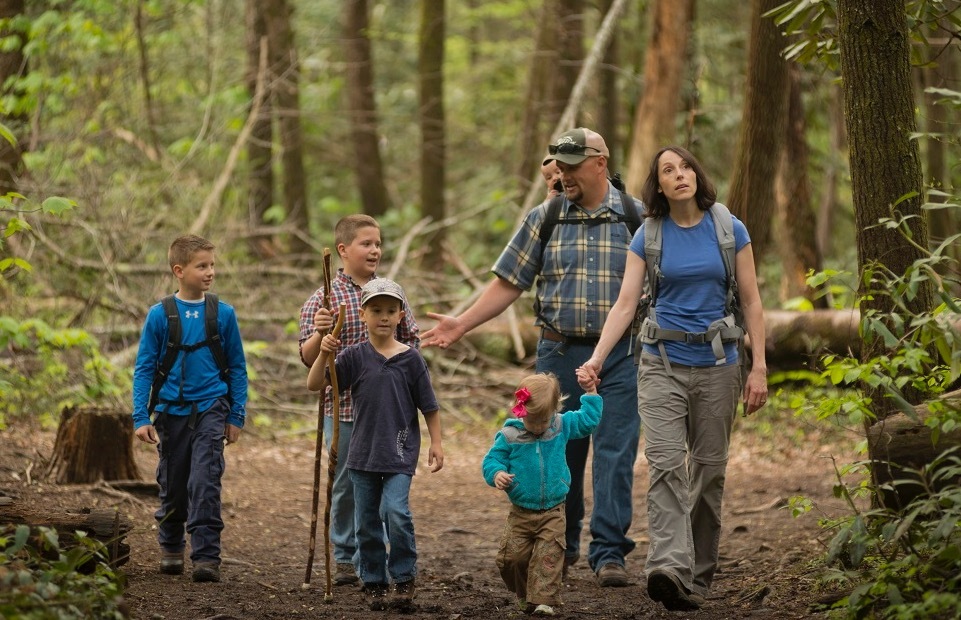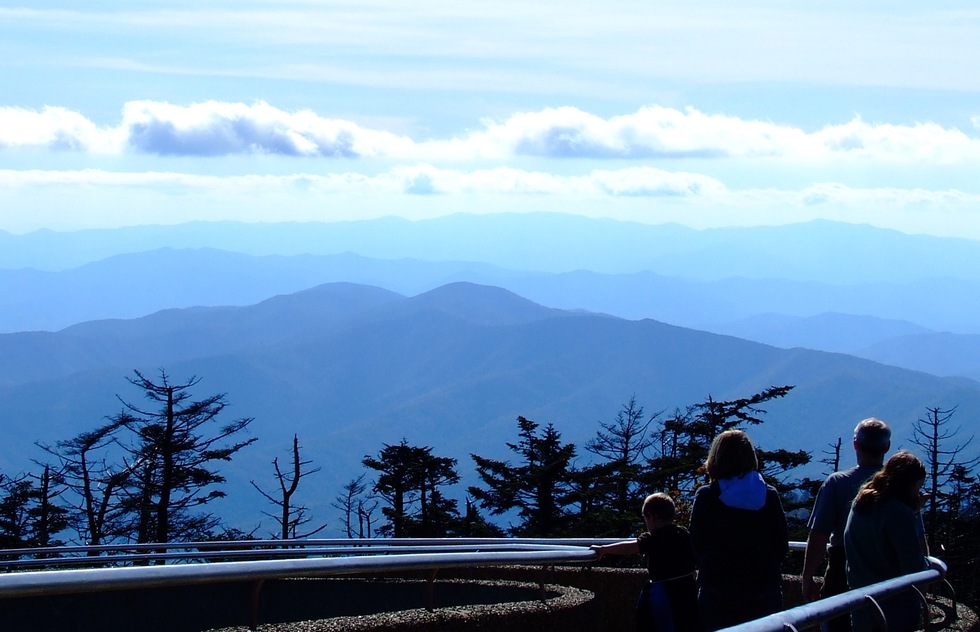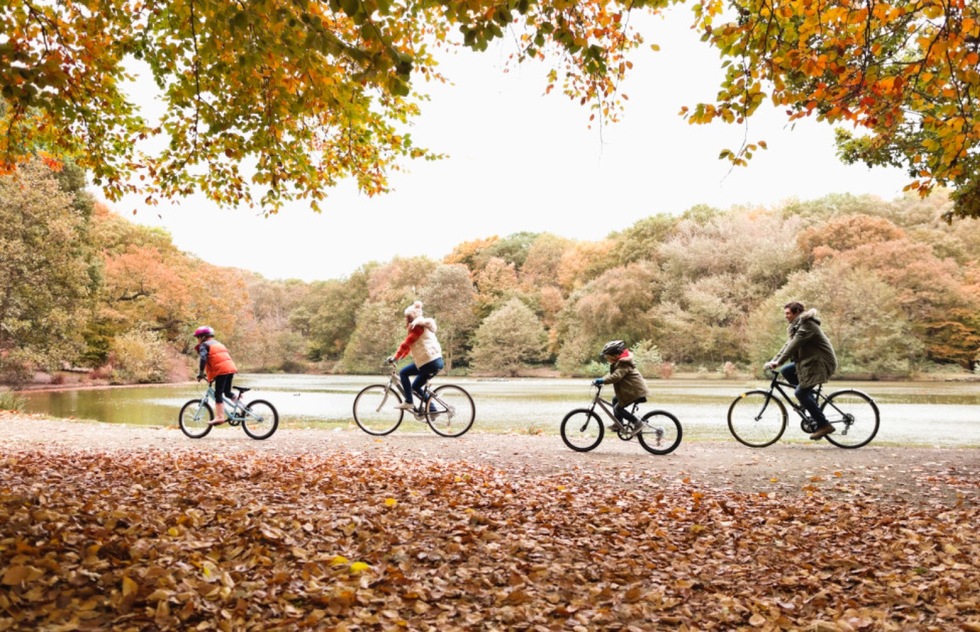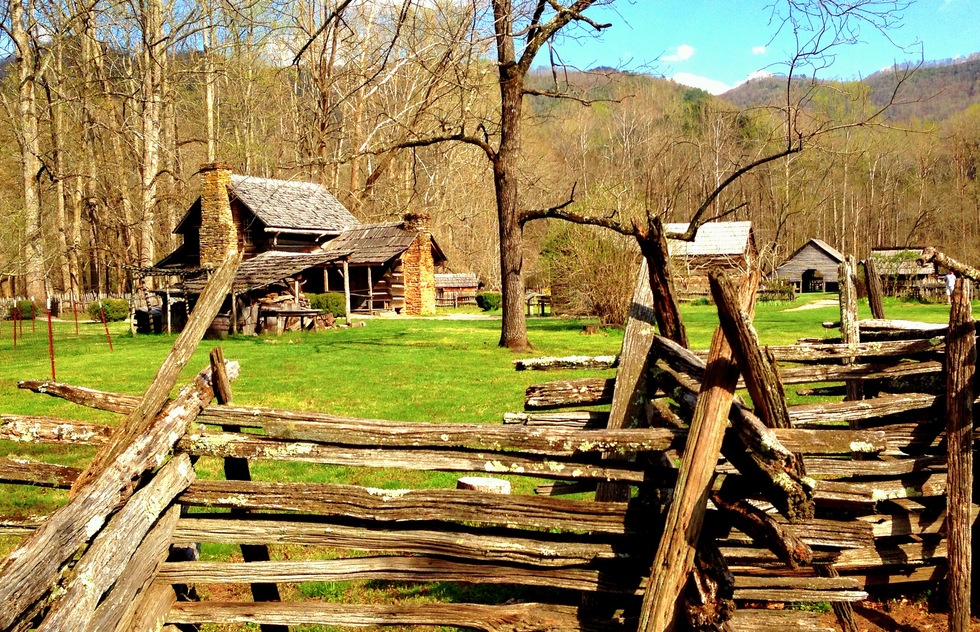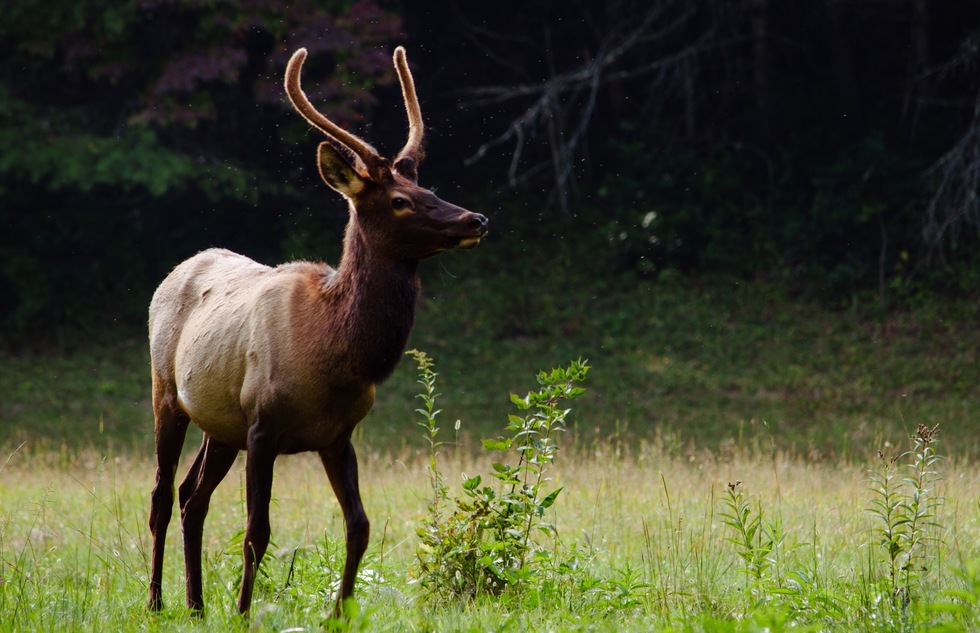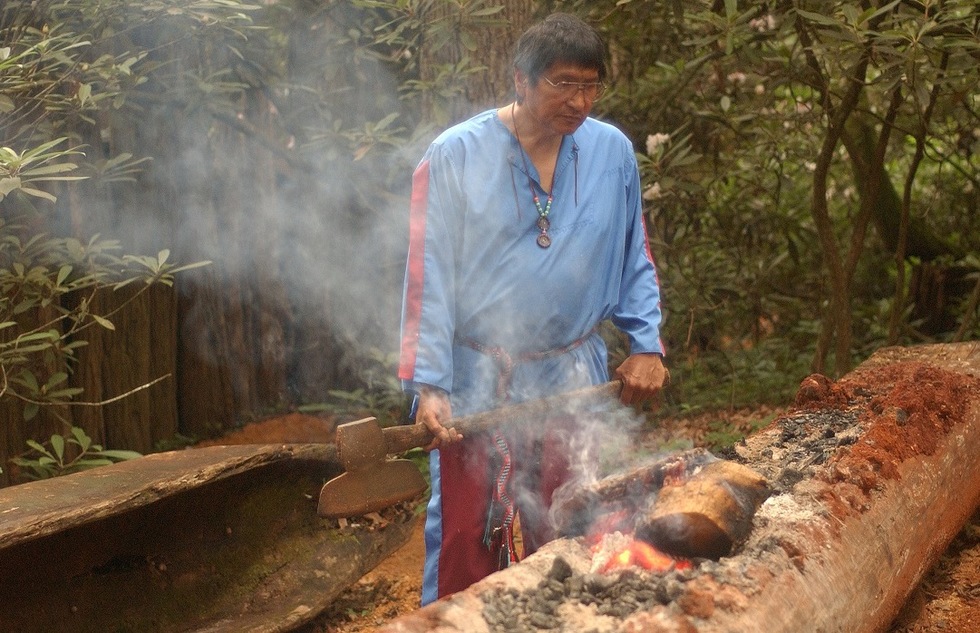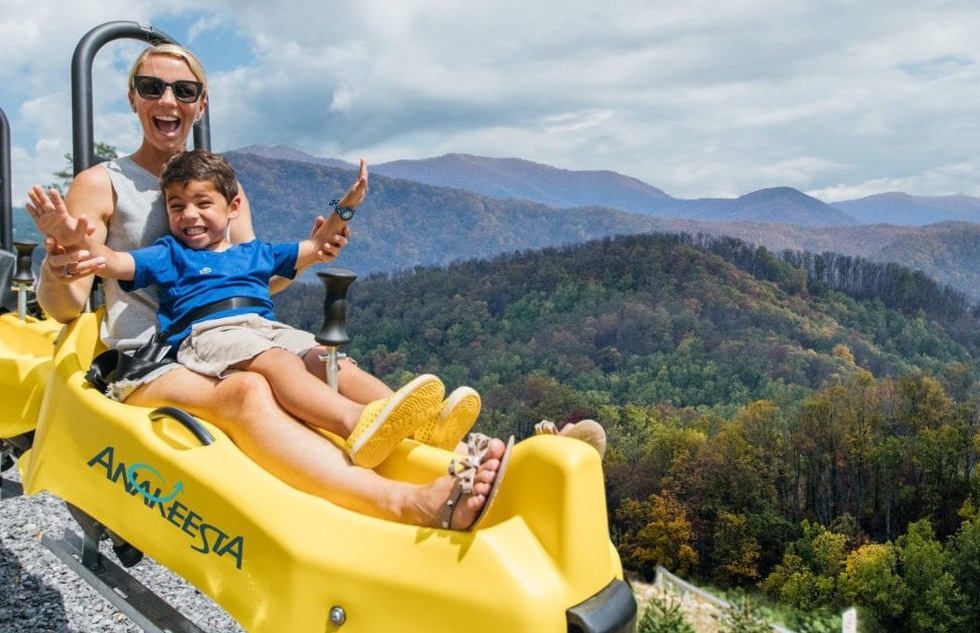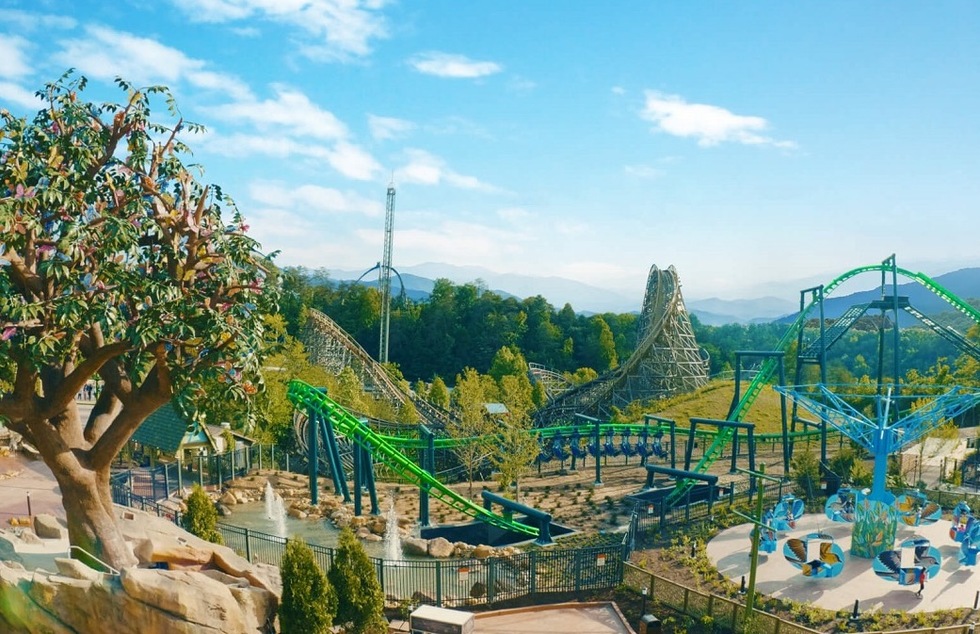The Best Ways for Families to Explore the Great Smoky Mountains
By Candyce H. StapenThe most visited national park in the United States is Great Smoky Mountains National Park, where more than a half million acres of craggy peaks and forested ridges are caressed by the swirling mist that gives the mountain range its name. Straddling the Tennessee-North Carolina border, the park abounds with scenic drives and easy hikes for families with young children (who can complete tasks to become junior rangers) as well as horseback riding and more challenging trails for families with teens. Just outside of the park, there’s whitewater rafting, treetop canopy walks, and hands-on history lessons about the Cherokee people. Here’s our guide to the best ways for families to explore the Great Smoky Mountains.
Take little kids on easy strolls through sun-dappled woods along the Quiet Walkways, 0.25- to 0.50-mile-long paths. Primarily located along Newfound Gap Road and Little River Road, these trails give families with toddlers and preschoolers opportunities to get out of their cars. With older kids, hike to one—or more—of the park’s many waterfalls. The Deep Creek Trail, a moderate 1.6 miles round trip, winds past two cascades: the 60-foot-high Tom Branch Falls and the 25-foot-high Indian Creek Falls. Meandering through an old growth hemlock forest, the 2.6-mile Trillium Gap Trail takes hikers behind the 25-foot-high Grotto Falls. A ranger-led night hike (available in summertime only) lets you see a whole different side of the park. You’ll listen for hooting owls and howling coyotes and learn how to spot the tracks of foxes, raccoons, and bobcats. Check with the Sugarlands Visitor Center for times.
The park is known for its gorgeous mountain vistas. With limited time to explore, combine a hike with a scenic drive. From the Foothills Parkway, savor sweeping views that are especially striking during leaf-peeping season. The 31-mile Newfound Gap Road bisects the park, connecting the entrance in Cherokee, North Carolina, with the one in Gatlinburg, Tennessee. The winding road leads through woodlands dotted with awesome overlooks. To take in a 360-degree panorama, drive to Clingmans Dome (pictured), the park’s highest point at 6,643 feet. Reaching the observation tower from the parking lot requires walking a moderately steep half-mile path that is far from congenial to stroller-pushing. But the view is worth the work.
Biking the 11-mile loop around Cades Cove is a great way to experience one of the park’s most popular spots—a valley on the Tennessee side filled with log homes and other historic structures built by 19th-century inhabitants. On Wednesdays and Saturdays from early May through late September, the road is open to cyclists and hikers only—no cars—until 10am. Sure, you have to get up early, but there's a bonus to being there before breakfast: the chance to see the morning mist rise over meadows that are often dotted with deer. Cades Cove Trading Company rents adult- and kid-size bikes on a first-come, first-served basis. In summer and fall, it’s wise to get there soon after the shop opens at 6:30am. Two additional trails that permit bicycles stretch alongside rivers: the 1.5-mile Oconaluftee River Trail and the 1.9-mile Gatlinburg Trail next to the Little Pigeon River.
The park looks different from atop a horse. Kids welcome the saddle-high perspective along with the chance to lead a trusty steed. No experience is necessary for slow-paced, 45-minute guided rides from authorized stables, whose horses know to stick to the path. There are no reservations required for these first-come, first-served outings, and participants can be as young as 6 years old. Helmets are provided. Three of the park’s four spots to saddle up are located in Tennessee—Cades Cove Riding Stables, Smoky Mountain Riding Stables, and Sugarlands Riding Stables. The fourth, Smokemont Riding Stables, is in North Carolina. The Cades Cove location also offers horse-drawn carriage rides.
Long before the land became a national park, people lived here. For centuries, the Cherokee Nation hunted and fished in the area until they were forced to relocate (more on that later). On the Tennessee side, a barn, log cabin, and gristmill in Cades Cove remind you of the farming and logging community that occupied this spot in the 19th and early 20th centuries. The Mountain Farm Museum (pictured) near the park entrance in Cherokee, North Carolina, tells a similar tale. At the museum’s Mingus Mill, historical interpreters demonstrate grinding corn and wheat the old-fashioned way at select times from mid-March through mid-November. In the Cataloochee Valley to the northeast, a church and other structures remain, along with grave markers that can be seen from some roads and hiking trails.
The valley’s natural setting is even more impressive than its human history. Framed by 6,000-foot-tall peaks, the Cataloochee supplies a welcome respite from the park’s more crowded roads and trails. Deer, elk, and other animals are frequently spotted in the meadows here, and the creeks are a fine fishing spot for trout (state fishing license required). Tweens and teens looking for a moderate challenge should consider the Boogerman Trail (if nothing else, they’ll like the name). This 7.4-mile round-trip trek leads through woods and requires crossing a creek by stepping on rocks and balancing on log bridges.
Once encompassing all of the Smokies, the Cherokee Nation’s regional lands now consist of a 57,000-acre reservation near the park’s Oconaluftee entrance on the North Carolina side. Here you can combine learning about Cherokee heritage with casting for trout in stocked streams, mountain biking on dirt trails, tubing down the Tuckasegee and Oconaluftee rivers, and other outdoor adventures. At the Oconaluftee Indian Village (pictured), a re-created 1760s settlement, Cherokee people demonstrate hunting with a blow gun, hulling out canoes, weaving baskets, cooking bean bread, and molding coiled ropes of clay into pottery. The Museum of the Cherokee Indian details ancient legends as well as the trauma of the Trail of Tears, the forced march of 16,000 Cherokee from this area to Oklahoma. In season, take in the spectacle of Unto These Hills, an outdoor drama about Cherokee history and culture.
More than 2,100 miles of creeks, streams, and rivers run through the national park. Nimble kayakers can maneuver through these boulder-strewn, often shallow waterways. The conditions aren't ideal for rafting, but you can put in for guided whitewater trips, whether mild or wild, at towns outside the park. Maneuver through riffles as you make your way through the lower Pigeon River gorge, a 5.5-mile scenic float trip suitable for kids as young as 3 years old. On the exhilarating 6.5-mile upper Pigeon River outing, on the other hand, you can build family bonds by paddling through rapids and screaming (happily, we hope) as your raft drops with the river. Participants must be at least 8 years old with a minimum weight of 70 pounds. Smoky Mountain Outdoors operates tours from March through October from Hartford, Tennessee, located 45 miles north of Gatlinburg.
In the Cherokee language, “Anakeesta” refers to high ground. At the mountaintop adventure center of that name—located outside the national park in Gatlinburg—the fun starts with your arrival. The place can be accessed only by the Chondola, a hybrid lift with both open-air ski chairs and enclosed gondolas that whisks you to high-altitude fun. Walk with your kids along a hanging bridge suspended in the trees, ride a coaster down a hillside, and race your teens on dueling ziplines. Youngsters can pan for faux gems and fossils in a mine sluice and climb a treehouse-themed playground. Anakeesta’s Firefly Village has places to shop, eat, drink, or just admire the view.
At Dolly Parton’s Dollywood theme park in Pigeon Forge, Tennessee, roller coasters twirl, loop, and drop the willing at speeds of up to more than 60 miles per hour. The Wildwood Grove expansion (pictured), added in 2019, aims to delight younger kids with a selection of relatively tame rides as well as a magical version of the surrounding Smokies landscape; a tree filled with twinkling faux butterflies is the centerpiece. In keeping with its superstar namesake, Dollywood also has plenty of musical shows—squeeze these in among your gang’s must-do rides. The park’s extra-fee TimeSaver passes will help place you in shorter lines. Later, cool off at Dollywood’s sister water park, Splash Country, where you’ll find a wave pool, lazy river, and water slides.






